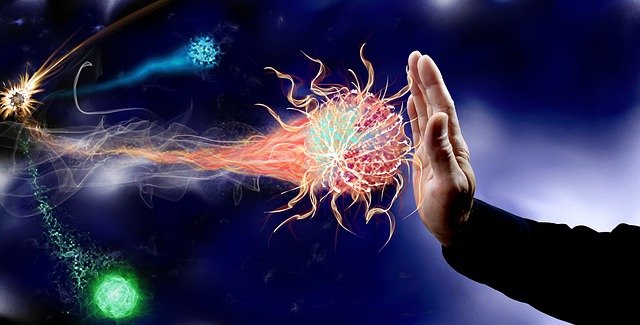The body has three main lines of defence against disease. These involve mechanical barriers, chemical barriers and cells.
Mechanical barriers
Although many bacteria live on the surface of the skin, the outer layer of the epidermis seems to act as a barrier that stops them getting into the body. But if the skin is cut or damaged, the bacteria may get into the deeper tissues and cause infection. Hairs in the nose help to filter out bacteria that are breathed in. However, if the air is breathed in through the mouth, this defence is by-passed.
Chemical barriers
The acid conditions in the stomach destroy most of the bacteria that may be taken in with food. The moist lining of the nasal passages traps many bacteria, as does the mucus produced by the lining of the trachea and bronchi. The ciliated cells of these organs carry the trapped bacteria away from the lungs.
Tears contain an enzyme called lysozyme. This dissolves the cell walls of some bacteria and so protects the eyes from infection.
Cells
When bacteria get through the mechanical and chemical barriers, the body has two more lines of defence – white blood cells and antibodies, produced by white blood cells. One type of white blood cells fights infection by engulfing bacteria (a process called phagocytosis) and digesting them. Another type produces antibodies that attach themselves to bacteria, making it easier for other white blood cells to engulf them.
Vaccination
The body’s defences can be enhanced by vaccination. This involves a harmless form of the pathogen (bacteria or virus) being introduced into the body by injection or swallowing. The presence of the pathogen triggers white blood cells to make specific antibodies to combat possible infection. If the person is exposed to the disease later, defences are already in place to prevent it from developing (the person is immune to that disease). Without vaccination, white blood cells need to be exposed to the disease organism before they make the appropriate antibody. If the disease is potentially lethal, the patient could die before the white blood cells have time to act.





Leave a Reply
You must be logged in to post a comment.